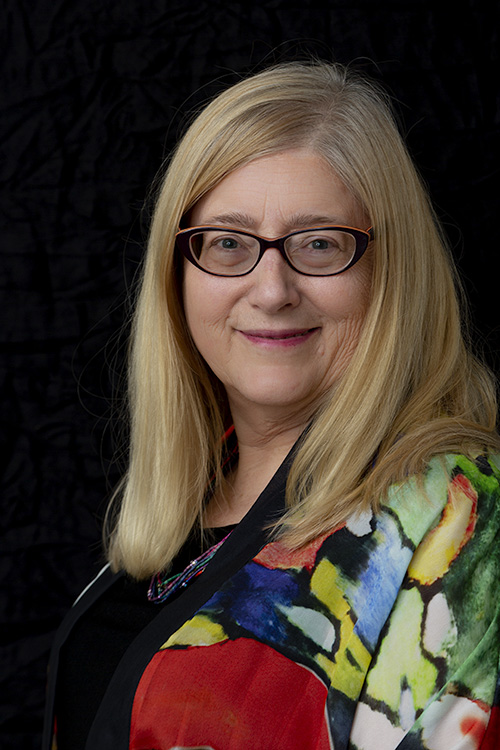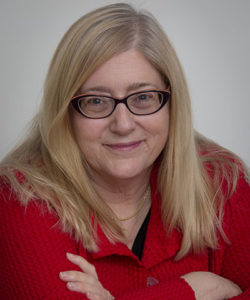Crone Culture
Becca Levy’s work at Yale University proves that for the sake of our health and longevity, it is essential to cultivate a positive attitude about aging. One great approach is to explore the culture of women past midlife. Because here is the secret: Despite the often negative portrayals of older women in the mainstream media, the culture of age-positive older women is growing by the minute.
This active and enthusiastic pro-aging culture speaks to our strengths and builds our community. There are novels with vivid older women protagonists, podcasts run by older women influencers, nonfiction books about everything from older women’s sexuality to the lives of women who came to prominence in later life.
Make the very best of us visible to yourself, and you will have more to look forward to in your later years than you could ever have imagined. Immerse yourself in these riches and reprogram your Inner Ageist. Read books, watch shows, and subscribe to online groups that celebrate the wisdom, beauty, power and worth of older women. Pay attention to what resonates with you, as you explore the possibilities for your own next steps
Crone Influencers
In recent years, the network of crone influencers has blossomed. Older women support one another in community and creativity, through books, TED talks, and online. Take Ashton Applewhite. Almost two million people have viewed her 2017 “Let’s End Ageism” TED talk. Then in 2020, Ashton published her immensely popular book, This Chair Rocks: A Manifesto Against Ageism. The book tackles all flavors of ageism, in the workplace, in popular culture, and in social constructs about older people’s sexuality. Ashton focuses on the intersections between ageism, sexism, racism and ableism. She also founded the Old School Anti-Ageism Clearinghouse as a hub for anti-ageism resources and events. Connect with Ashton on LinkedIn to learn more.
Another key influencer is Geena Davis. After making a movie every year, including hits like Thelma and Louise and A League of Their Own, Davis thought the ride would just keep going—until the phone stopped ringing on her fortieth birthday. She made exactly one movie in the decade of her forties. In response, she founded the Geena Davis Institute on Gender in Media to spotlight representation based on gender, race, LGBTQ+, disability, age and body size. Leveraging her access to industry leaders, Davis brings data to the table through studies like Frail, Feeble and Forgotten: A Report on the Movie Roles of Women of Age. The Institute is a membership organization, and you can get involved here.
More pushback on gendered ageism in the movie industry comes from Meryl Streep and Oprah Winfrey. Their project The Writers’ Lab supports women screenwriters over forty through an annual script development retreat in upstate New York (and international retreats in Europe and the UK). Representation matters, and with the work of these great organizations we can expect to see more films that feature strong older women.
Joan Price is a crone influencer who promotes sensuality as one key to a vivid older life. Often called the “senior sexpert,” Joan hosts webinars and writes a blog about senior sexuality. She is a much-published author, including the terrific resource, Naked at Our Age. In collaboration with Jessica Drake, Joan made a documentary about sex after sixty, and she answers questions from readers in a monthly column on Senior Planet. Joan’s work was featured in the cover story of the January 12, 2022 New York Times magazine, “The Joys (and Challenges) of Sex after 70.”
More crone influencers are coming up, empowering women in fashion, health, careers, science, sexuality, and the arts. Here are some emerging influencers you may enjoy following:
- Rachel Peru is a curvy woman who became a silver-haired fashion model at age 56. Rachel battled a negative body image for much of her life and later overcame those negative inner messages to become a swimsuit model. Through her modeling, Rachel has come to know many older women who inspire her with their passionate direction after midlife. In her podcast, Liberté Free to Be, Rachel interviews older women whose stories break through stereotypes.
- Wendy Green has pursued several careers including computer programmer, technical trainer, and in Management and Leadership development where she helped managers hone their leadership skills. She was certified as a professional coach and was laid off from that career in the pandemic, when she refocused on providing inspiration and encouragement to Boomers and beyond to create our best life. Her website, heyboomer.biz, is a great source of information. Through her weekly live shows, podcasts and blog posts, Wendy shares information relevant to building meaningful, purposeful older lives. Follow Wendy on Facebook, LinkedIn, Spotify and YouTube.
The influence of women over sixty is steadily growing, and so are our connections in community. We grow stronger as we weave those connections together.
Our culture also features books by and about older women. Nonfiction books include everything from photography (such as Wise Women: A Celebration of their Insights, Courage and Beauty) to studies of mythology (such as Goddesses in Older Women by Jean Shinoda Bolen). And there is such a rich vein of fiction and memoir to choose from.
Novels
Ruth O. Saxton is professor emeritus at Mills College in California, where she founded the Women’s Studies program in the 1970s. In 2020, when Saxton was eighty, she published The Book of Old Ladies, her analysis of how older women are portrayed in fiction. Saxton talks about the “Little Red Riding Hood” phenomenon in fiction from the past: The older woman is in the story, but her story doesn’t matter (she is “fodder for the wolf”). But in recent years more women are writing vivid, complex older female characters. Here are some of Saxton’s recommendations for books with strong older women protagonists.
- Sarah Ladipo Manyika’s slender novel, Like a Mule Bringing Ice Cream to the Sun, tells the story of Dr. Morayo da Silva, a retired English professor, approaching her 75th birthday. Sarah was born in Nigeria, has been married to a diplomat, and has lived in many countries before settling in San Francisco. Each of the novel’s twenty-one chapters is a first-person account by Morayo or someone she encounters in her neighborhood, We observe her love of color, beautiful African fabrics, and bright red lipstick, as well as her kindness, her curiosity, her love of books, and her delight in driving her Porsche Buttercup on San Francisco’s hills. Morayo is wonderful, wise, kind, and fearless.
- Isabel Allende’s The Japanese Lover tells of another San Francisco denizen, Alma Belasco, whose parents sent her from Poland in 1939 to live in safety with relatives in an opulent San Francisco mansion where she meets Ichimei Fukuda, the son of the family’s gardener. The reader gradually learns about a secret passion that has existed for nearly seventy years. The Times book jacket blurb describes this lovely book as “a novel of high romance and lush sensuality, unashamedly about the enduring power of love and ending on a note of grace.”
Saxton also recommends Octavia Butler’s Kindred, Paula Marshall’s Praisesong for the Widow, and my own Brilliant Charming Bastard, the tale of three women scientists in their sixties who take smart revenge on a lying dilettante who is dating all of them and stealing their ideas. Saxton calls Bastard “an upbeat read with a happy ending.”
Memoirs and Autobiography
Exploring later lives well lived opens us up to possibilities. Here are some stellar examples to explore.
- Billie Best has been a music producer, a marketing executive, a farmer and a writer. Her memoir, How I Made a Huge Mess of My Life (or Couples Therapy with a Dead Man), is a witty, unblinking look at success, failure, bliss, life, and death. Best’s memoir of caring for her dying husband while coming to terms with his infidelity is enlightening and engaging.
- When Rae Padilla Francoeur wrote Free Fall: A Late-in-Life Love Affair, she did not have one example of other older women writing about sex. Yet her memoir features bedroom scenes of unparalleled power. She immerses us in the visceral experience of a late life love affair and then explores the countervailing pull of the narrator’s responsibilities to career and to a demanding family life. If you have been ambushed by lust in your sixties (or want to be), if your desire has gone off like fireworks in the lives of the people around you, this story is sure to resonate.
- Maggie Kuhn had been editor of Social Progress, a journal of the Presbyterian Church, for twenty years when she was forced to retire in 1970, just before her 65th A lifelong activist, Kuhn organized a group of friends who had also been forced to retire and created a new movement to combat ageism, racism, and militarism. As founder of the Gray Panthers, Kuhn was a charismatic figure, writing and speaking about nursing home reform, ending forced retirement, and improving health care access. Her autobiography, No Stone Unturned, shows us why we should enjoy “learning and sex until rigor mortis.” It is an exuberant book, full of the life of the senses. She wrote, “For me, this is a glorious period of life. More than anything else, old age has fed my passions.” Given that women, on average, live years longer than men, Kuhn proposed that older women should feel free to form sexual partnerships with younger men or with each other. She reflected on a love affair with a much younger man: “Our sexuality is so influential in determining who we are and how we relate to others. Indeed, it is the material of life and to deny it in old age is to deny life itself.”
Movies and Shows
Geena Davis’ work on behalf of representation in Hollywood is bearing fruit. Here are just a few of the many movies and shows that reject stereotypes in favor of portraying the vivid lives of women after midlife.
There is so much to explore in our culture of vibrant women past midlife: Movies, television shows, books, and more. We have spent a lifetime absorbing gendered ageist messages, and to push back in our own lives is an important ongoing effort. Much like pulling weeds in a garden, every time we root out a negative message and plant a positive one, it makes a difference. And the culture of women after midlife is filled with positive messages.
You are part of crone culture too—what will you do to please yourself, enlighten your friends, and help shift the dominant narrative? Try starting with these ideas:
- Choose an example of older women’s written culture (such as a book or blog) and read it. Then write your thoughts about it.
- Choose a resource that recurs, such as a podcast or blog. Follow it and capture your thoughts about each episode.
- Watch a movie about an older woman and write down some ways her age was affirmed or denigrated by the other characters.
- Share some of your favorites from older women’s culture with your friends, or recommend a selection to your book club.
A Hub for Crone Culture
Here at Baubo Books (my self-publishing company), we are collecting all these resources to set up in one place on the internet, so that women past midlife who wish to find age-positive books, podcasts, organizations and more, by and for women, can readily do so. I call this compendium the Crone Culture Hub, it will be available very soon, and I welcome your suggestions. Please send your favorites to stella [@] stellafosse.com.
And enjoy!



4 Responses
I’ve found this page in your blog fascinating, inspiring, and I can’t wait to start checking into some of these resources. ~Judith~
Thanks Judith! Enjoy!
Wow, thank you for this! I’m honored to be among your recommended crones. I love that you included Rae Francoeur’s spicy Free Fall. I reviewed it back in 2010: https://joanprice.com/2017/11/free-fall-late-in-life-love-affair.html . Thank you for the novel recommendations, too — I’m always looking for fiction with a strong, non-stereotypical elder protagonist.
You do great work, Stella Fosse.
Thank you, Joan! We definitely have a mutual admiration society going! Your writing about sexuality later in life is an inspiration.
PS I hope you’ll enjoy my upcoming novel, Vampires of a Certain Age>, about the love affair between a 500-year-old woman and a woman in her fifties. Launching September 15th!